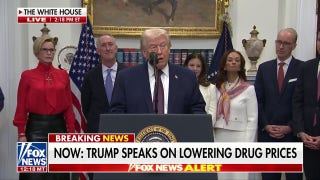Wholesale Inventories Fall by Most in a Year and a Half
Wholesale inventories fell in May by the most in a year and a half, the second straight monthly decline and a sign that restocking by businesses could weigh against economic growth in the second quarter.
The Commerce Department said on Wednesday wholesale inventories dropped 0.5 percent during the month, confounding the expectations of analysts polled by Reuters, who expected an increase.
The data reinforces the view that U.S. economic growth could slow in the April-June period after expanding at a lackluster 1.8 percent annual rate in the first quarter. Deep federal budget cuts, which have trimmed wages for federal workers, are seen biting into growth until around the end of the year.
The decline in inventories in May was the sharpest since September 2011. However, sales were stronger than expected, rising 1.6 percent.
The government also revised its estimate for inventories in April to show a 0.1 percent decline rather than a previously reported modest increase.
Inventories are a key component of gross domestic product changes. They added more than half a percentage point to first-quarter GDP growth.
The declines in inventories during May were broad based, from long lasting manufactured goods to groceries and farm products. The fall in durable goods stocks was the largest since December 2009.
U.S. stocks opened little changed as traders awaited the minutes from the June Federal Reserve policy meeting, which will be released later on Wednesday. U.S. Treasuries were steady, while the euro extended gains against the dollar.
In recent weeks, interest rates have been rising sharply as the Fed prepares to reduce its extraordinary monetary stimulus.
Last week, mortgage rates rose to their highest level in two years, weighing against demand from potential homeowners, data from an industry group showed.
Interest rates on fixed 30-year mortgages rose for the ninth week in a row to average 4.68 percent in the week ended July 5, the Mortgage Bankers Association said. It was the highest level since July 2011 and a 10 basis point increase over the week before.
The surge in costs has been expected to push some undecided buyers into the market as they rush to lock in rates before they rise even more, but MBA's seasonally adjusted gauge of loan requests for home purchases fell 3.1 percent, the second straight week of declines.
Rates have been rising since early May, and the increase accelerated after comments from Fed Chairman Ben Bernanke last month that the U.S. central bank expects to wind down the pace of its quantitative easing program later this year if the economy improves as expected.



















